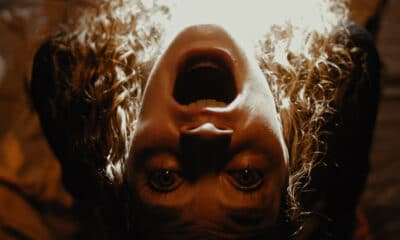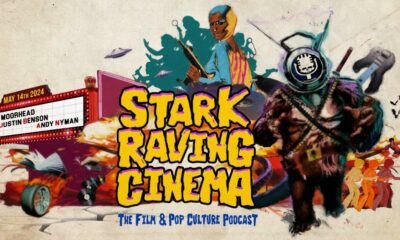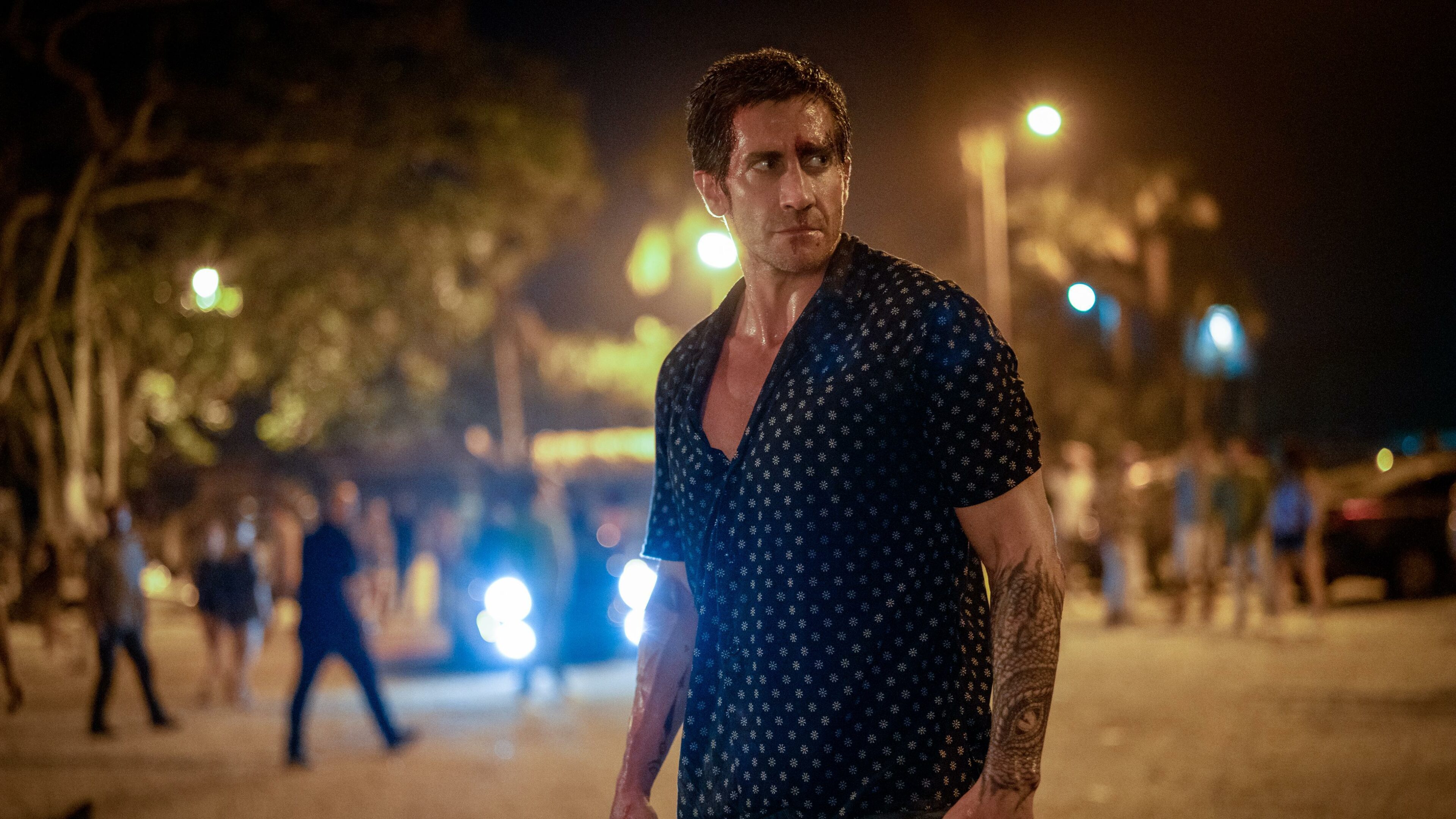 With the release of PARANORMAL ACTIVITY 3 this coming Friday, THN has decided to take at look at what has recently become a growing genre in its own right: The found footage film.
With the release of PARANORMAL ACTIVITY 3 this coming Friday, THN has decided to take at look at what has recently become a growing genre in its own right: The found footage film.
Whilst many mistakenly percieve that the format was started by THE BLAIR WITCH PROJECT, in fact the video nasty-classic CANNIBAL HOLOCAUST that trailblazed with this style of faux documentary film way back in 1980. Ruggero Deodato’s notorious film featured a missing documentary team’s footage, found by a group sent out to rescue them only for the rescuers to find via a discovered film camera what unspeakable horrors became of them. The film gained a cult following and saw many imitations throughout the years. CANNIBAL HOLOCAUST also featured prominently on the BBFC’s banned film list and the Video Recording Act 1984.
 It seemed to take an age before the experimental style of shooting was used again. THE LAST BROADCAST was released without much fanfare in 1998, a year before THE BLAIR WITCH PROJECT, and was soon lost amongst the hundreds of straight-to-video features that littered the bottom shelves of many video stores. However, what the similar-in-style BLAIR WITCH can take credit for is kick-starting the trend, even if THE LAST BROADCAST beat them to it by a year. It was the huge box-office takings that made studio executives sit up and take notice, realising that serious money could be made from features without big name stars, a huge budget or without film-makers with masses of experience.
It seemed to take an age before the experimental style of shooting was used again. THE LAST BROADCAST was released without much fanfare in 1998, a year before THE BLAIR WITCH PROJECT, and was soon lost amongst the hundreds of straight-to-video features that littered the bottom shelves of many video stores. However, what the similar-in-style BLAIR WITCH can take credit for is kick-starting the trend, even if THE LAST BROADCAST beat them to it by a year. It was the huge box-office takings that made studio executives sit up and take notice, realising that serious money could be made from features without big name stars, a huge budget or without film-makers with masses of experience.
It was word of mouth, film festival screenings, and the Daniel Myrick and Eduardo Sanchez led viral campaign that set BLAIR WITCH apart from other films. The mysterious but simple ‘stickman’ logo along with the faces of three missing students emblazoned on T-shirts, posters and the website homepage has now been copied to huge success by many blockbusters since. The advertising campaign would have you believe that the events in film actually happened – a clever trick to draw in audiences pioneered by THE TEXAS CHAINSAW MASSACRE in the 1970s.
 The makers of THE LAST BROADCAST had a right to feel aggrieved at THE BLAIR WITCH PROJECT’s unexpected success, whilst THE LAST BROADCAST was every bit as unsettling and in many aspects a better film, without the success of BLAIR WITCH it may have gone completely unnoticed. A sequel to BLAIR WITCH the following year entitled BOOK OF SHADOWS: BLAIR WITCH 2 was a disaster for the studio that bought the rights and threw money at it. It changed the found footage format for the usual story driven narrative and never really worked; it’s a mess of a film but does have a few unnerving scenes.
The makers of THE LAST BROADCAST had a right to feel aggrieved at THE BLAIR WITCH PROJECT’s unexpected success, whilst THE LAST BROADCAST was every bit as unsettling and in many aspects a better film, without the success of BLAIR WITCH it may have gone completely unnoticed. A sequel to BLAIR WITCH the following year entitled BOOK OF SHADOWS: BLAIR WITCH 2 was a disaster for the studio that bought the rights and threw money at it. It changed the found footage format for the usual story driven narrative and never really worked; it’s a mess of a film but does have a few unnerving scenes.
 George A. Romeo decided to use the style for his next zombie film, DIARY OF THE DEAD in 2007. The director had a hard act to follow with his ‘DEAD’ movies of the 1970s and 1980s that many deem to be masterpieces. The film was both a box-office and critical failure. Showcasing amateurish acting and an overall uneventful plot, the film sank without a trace
George A. Romeo decided to use the style for his next zombie film, DIARY OF THE DEAD in 2007. The director had a hard act to follow with his ‘DEAD’ movies of the 1970s and 1980s that many deem to be masterpieces. The film was both a box-office and critical failure. Showcasing amateurish acting and an overall uneventful plot, the film sank without a trace
 In the same year that DIARY OF THE DEAD failed, REC became an instant hit. The Spanish film is a great watch and uses the camera to terrifying effect. It features a camera crew team who are following firefighters on a routine night’s work. But it soon turns horrific for all concerned after a call to an ‘infected’ building. The inevitable Hollywood remake reared its way to cinemas the following year. Entitled QUARANTINE it was a virtual shot-for-shot copy but failed to have the same effect. The use of familiar faces of Jay Hernandez (HOSTEL) and Jennifer Carpenter (DEXTER) worked against the film and the ‘is this real?’ concept most of these genre films tend to use. A sequel to REC was another success and followed directly on from the original set in the same sealed-off building.
In the same year that DIARY OF THE DEAD failed, REC became an instant hit. The Spanish film is a great watch and uses the camera to terrifying effect. It features a camera crew team who are following firefighters on a routine night’s work. But it soon turns horrific for all concerned after a call to an ‘infected’ building. The inevitable Hollywood remake reared its way to cinemas the following year. Entitled QUARANTINE it was a virtual shot-for-shot copy but failed to have the same effect. The use of familiar faces of Jay Hernandez (HOSTEL) and Jennifer Carpenter (DEXTER) worked against the film and the ‘is this real?’ concept most of these genre films tend to use. A sequel to REC was another success and followed directly on from the original set in the same sealed-off building.
 Eventually a big budget film was going to use the format to its advantage and the first film to do so was Matt Reeves’ CLOVERFIELD. A jaw-dropping intriguing teaser appeared almost a full year before its release. The time frame helped build a fanbase – all eager to know more about a movie that did not even have a title at the time. The project worked with the monster/disaster epic opening to huge commercial and critical success. The handheld camera operated by one of the characters created the effect that the viewer was amongst the carnage unfolding on screen. Watching it all happen was certainly a thrill, and director Reeves kept the audience waiting for a final reveal of the Godzilla-like creature.
Eventually a big budget film was going to use the format to its advantage and the first film to do so was Matt Reeves’ CLOVERFIELD. A jaw-dropping intriguing teaser appeared almost a full year before its release. The time frame helped build a fanbase – all eager to know more about a movie that did not even have a title at the time. The project worked with the monster/disaster epic opening to huge commercial and critical success. The handheld camera operated by one of the characters created the effect that the viewer was amongst the carnage unfolding on screen. Watching it all happen was certainly a thrill, and director Reeves kept the audience waiting for a final reveal of the Godzilla-like creature.
 PARANORMAL ACTIVITY’s success somewhat mirrored that of THE BLAIR WITCH PROJECT. A feature with zero stars, zero budget and a director without any experience in Oren Pelli (who then went on to work alongside SAW creator James Wan and Leigh Whannell on spooky thriller INSIDIOUS). There was also the similar advertising campaign as well as the usual festival screenings to build strong word of mouth. A trailer was released that decided to take the approach of not showing footage of the film it was advertising. Instead, it centred on the audiences’ terrifying reactions, creating a mystique around the film. This obviously worked, as PARANORMAL ACTIVITY opened strongly upon its wide release following an internet campaign that featured a voting process to get the film shown in a particular State in the US. The inevitable sequel followed a year later with even more success and many suggesting it was even more effective.
PARANORMAL ACTIVITY’s success somewhat mirrored that of THE BLAIR WITCH PROJECT. A feature with zero stars, zero budget and a director without any experience in Oren Pelli (who then went on to work alongside SAW creator James Wan and Leigh Whannell on spooky thriller INSIDIOUS). There was also the similar advertising campaign as well as the usual festival screenings to build strong word of mouth. A trailer was released that decided to take the approach of not showing footage of the film it was advertising. Instead, it centred on the audiences’ terrifying reactions, creating a mystique around the film. This obviously worked, as PARANORMAL ACTIVITY opened strongly upon its wide release following an internet campaign that featured a voting process to get the film shown in a particular State in the US. The inevitable sequel followed a year later with even more success and many suggesting it was even more effective.
 THE LAST EXORCISM tried a found footage approch to the possession theme. The plot surrounds a minister who has made a living conning religious people into believing their loved ones are suffering from demonic possession until he comes across a case that looks authentic. THE LAST EXORCISM is a very gory but very effective film, and director Daniel Stamm is destined for even greater things.
THE LAST EXORCISM tried a found footage approch to the possession theme. The plot surrounds a minister who has made a living conning religious people into believing their loved ones are suffering from demonic possession until he comes across a case that looks authentic. THE LAST EXORCISM is a very gory but very effective film, and director Daniel Stamm is destined for even greater things.
 This year saw the release of two found footage efforts in TROLLHUNTER and APOLLO 18. The latter featured the simplistic concept transferred to outer space, more specifically, a NASA exploration to the moon that, as you can imagine, does not turn out well for its central characters. Just like the films it has followed, APOLLO 18 has its moments and as an idea, features some stand-out scenes. A creepy turn from its central character and a quite inventive idea for the unlikely source of the threat makes APOLLO 18 an interesting premise. TROLLHUNTER on the other-hand was a hugely enjoyable romp centred around the group of Norwegian students’ attempts to follow and document the fabled folk creatures in spectacular fashion.
This year saw the release of two found footage efforts in TROLLHUNTER and APOLLO 18. The latter featured the simplistic concept transferred to outer space, more specifically, a NASA exploration to the moon that, as you can imagine, does not turn out well for its central characters. Just like the films it has followed, APOLLO 18 has its moments and as an idea, features some stand-out scenes. A creepy turn from its central character and a quite inventive idea for the unlikely source of the threat makes APOLLO 18 an interesting premise. TROLLHUNTER on the other-hand was a hugely enjoyable romp centred around the group of Norwegian students’ attempts to follow and document the fabled folk creatures in spectacular fashion.
The found footage genre does not seem to be stopping any time soon, with upcoming sequels to THE LAST EXORCISM, CLOVERFIELD and REC all currently in the works, along with the imminent release of PARANORMAL ACTIVITY 3. Although it is unclear whether some of those sequels will continue their original genre format, or if they will change to the standard style and narrative. It is a change that many will be wary of considering what it did for THE BLAIR WITCH PROJECT sequel, which may be corrected as THE BLAIR WITCH PROJECT 3 is currently in development.
PARANORMAL ACTIVITY 3 is released Friday 21st October.
http://www.youtube.com/watch?v=90r3CnPI0AM&ob=av3e
Craig was our great north east correspondent, proving that it’s so ‘grim up north’ that losing yourself in a world of film is a foregone prerequisite. He has been studying the best (and often worst) of both classic and modern cinema at the University of Life for as long as he can remember. Craig’s favorite films include THE SHAWSHANK REDEMPTION, JFK, GOODFELLAS, SCARFACE, and most of John Carpenter’s early work, particularly THE THING and HALLOWEEN.

Latest Posts
-


Amazon Prime
/ 15 mins agoTeaser for Will Ferrell and Reece Witherspoon comedy ‘You’re Cordially Invited’
A teaser trailer has dropped for the comedy You’re Cordially Invited which is set...
By Paul Heath -


Film News
/ 42 mins agoBritish horror film ‘The Moor’ sets release date
A release date for British horror movie The Moor has been set for later...
By Paul Heath -


Film News
/ 48 mins agoFrightFest’s Paul McEvoy and filmmaker Jake West launch new podcast
A new film and pop culture podcast has been launched by FrightFest’s Paul McEvoy...
By Paul Heath -


Film News
/ 7 hours ago‘Road House 2’ on the way with Jake Gyllenhaal
It looks like Jake Gyllenhaal will have to work on those abs again as...
By Paul Heath













